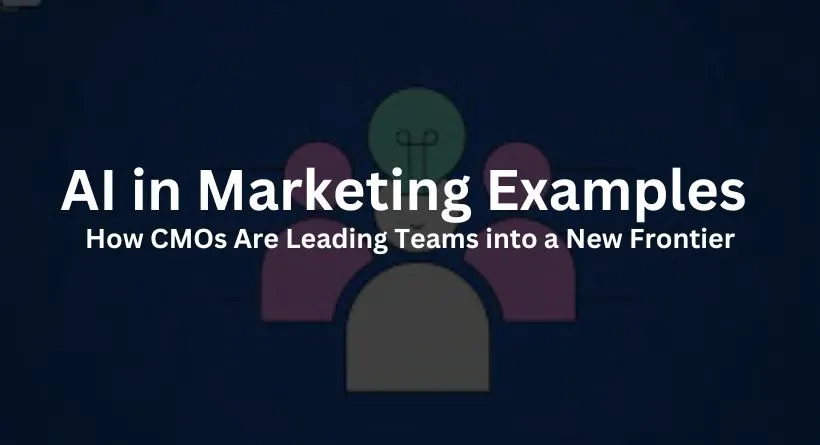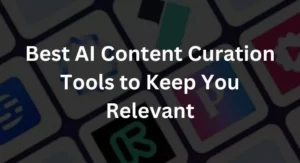
In the marketing sector, Chief Marketing Officers (CMOs) are often faced with a number of typical questions that keep them up at night. For instance, “How can we do more with fewer resources?” In addition to “How can we make a greater impact without burning out our teams?” When Lisa Cole became Cellebrite’s Chief Marketing Officer last year, she was eager to address these problems. Her goal was pretty clear: she wanted to demonstrate that the marketing department could improve employee work-life balance while still producing results.
The Role of AI in Marketing

To tackle these challenges, Cole recognized the transformative potential of artificial intelligence (AI). She saw AI as the impetus to resolve these issues effectively. In her pursuit, she brought in Nicole Leffer, a CMO AI advisor, to explore the possibilities of incorporating AI into the marketing landscape. This partnership serves as an exemplary case of how brands are harnessing the power of AI in marketing to achieve remarkable results.
You may also like reading: AI Marketing Tools and Strategies: What to Know
Embracing Technology
Rather than perceiving technology as a threat, CMO Lisa Cole adopted a different perspective. She viewed AI as a perpetual partner, available to brainstorm and ideate at any time. Cole’s experience revealed that her best ideas often surfaced during off-hours when she didn’t want to disturb her team. AI, she realized, was the intelligent marketing strategist readily available in her pocket.
Mobilizing a Movement
Cellebrite, a mission-driven organization committed to saving and protecting lives, sought to initiate a movement. When Lisa Cole contemplated a new publishing commitment campaign, she turned to AI, specifically ChatGPT, to pressure-test and anchor her ideas. This collaboration was instrumental in shaping the campaign and accelerating the brainstorming process.
Overcoming Challenges
Nicole Leffer, the CMO AI advisor, encouraged a culture of experimentation to overcome the challenges of implementing AI. Many marketing teams initially engage with AI out of curiosity, but challenges such as learning curves, hallucinations, and glitches can deter them. Leffer’s advice is to persevere, learn from mistakes, and explore the full potential of AI.
Building a Culture of Experimentation
In her experience, Leffer observed that the most common challenge in training CMOs and their teams to embrace AI is instilling a culture of technology adoption. Leaders must set the example and create an environment where using AI is encouraged and nurtured.
Generational Challenges
Contrary to common belief, generational challenges exist when it comes to AI adoption. Younger generations, who have grown up with advanced technology, may find it harder to adapt to the open-ended nature of AI. Older generations, with experience in navigating less user-friendly technology, are often more adaptable to AI.
The Role of AI in social media
Data from The Sprout Social Index™ highlights concerns about AI in social media interactions. Digital natives, especially those aged 18-24, express apprehension about increased AI usage in social media, reinforcing the generational gap in AI adoption.
Proving AI’s Power
To overcome challenges in incorporating AI across various teams and generations, CMO Lisa Cole emphasizes the importance of demonstrating the value of AI. Providing concrete evidence that the quality of output reflects the input is vital. The iterative process of questioning, refining, and strengthening the results is the key to success.
Crafting the Right Prompt
Nicole Leffer highlights the significance of knowing how to prompt AI effectively. The AI learning curve can be shortened by using ChatGPT’s prompt edit feature, which allows users to fine-tune their queries and obtain the desired output more efficiently.
Steps for Incorporating AI in Marketing

Based on the experiences of Lisa Cole and Nicole Leffer, here are five steps for successfully incorporating AI into marketing organizations:
Encourage Failure
Promote a culture where failure is seen as an opportunity for learning. Encourage experimentation and celebrate the use of AI, even when it results in failures. Embrace AI to accelerate the learning process.
Identify Opportunities
Integrate discussions about AI into team conversations to help team members understand how AI can enhance their work. Share prompts and best practices to build a culture of AI exploration.
Break Down Workflows
Audit existing workflows to identify areas where AI can expedite processes or enhance output quality. Use AI to save time and improve efficiency in tasks such as content creation and research.
Be Clear with AI Usage
Establish clear guidelines for AI usage to alleviate fears and uncertainties. Develop an AI use policy in consultation with legal counsel and ensure that data inputs are handled with care.
Offer Ongoing Training
Provide tailored resources and training to help marketing teams embrace AI in their specific roles and disciplines. Encourage continuous learning and exploration within a community of professionals.
Preparing the Next Generation
The adoption of AI in marketing is still in its infancy, and leaders like Lisa Cole and Nicole Leffer are paving the way for its integration. The most significant advantage of AI, as emphasized by Leffer, is the efficiency it brings. AI empowers marketing teams to take on more projects, freeing up time for higher-level strategic work and ultimately leading to revenue growth.
Conclusion
Incorporating AI into marketing is not without its challenges, but the benefits far outweigh the hurdles. As AI continues to evolve, marketing teams can harness its potential to enhance their workflows, deliver better results, and ultimately drive success.
FAQs
1. What are some practical applications of AI in marketing?
AI can be used in marketing for tasks like content generation, data analysis, personalized recommendations, chatbots, and audience segmentation.
2. How can marketing teams overcome the initial challenges of implementing AI?
Marketing teams can overcome challenges by promoting a culture of experimentation, offering ongoing training, and encouraging failure as a learning opportunity.
3. Are there generational differences in AI adoption in marketing?
Yes, generational differences exist, with older generations often being more adaptable to AI due to their experience in navigating less user-friendly technology.
4. How can AI be used to improve the efficiency of marketing workflows?
AI can expedite marketing workflows by automating tasks such as content creation, data analysis, and audience segmentation, saving time and improving efficiency.
5. What is the future of AI in marketing?
The future of AI in marketing holds great promise, with AI continuing to play a significant role in automating tasks, personalizing marketing efforts, and driving innovation in the industry.





